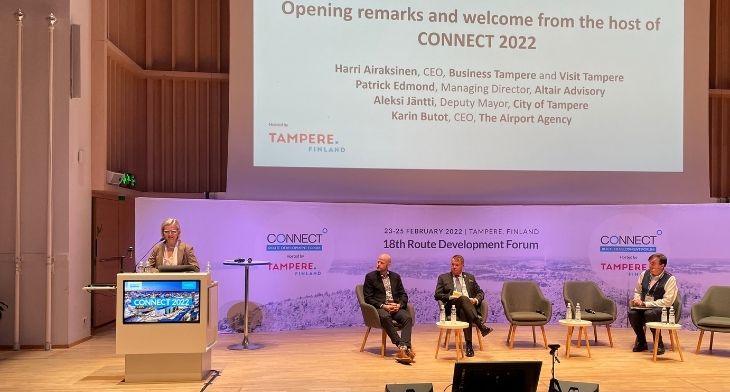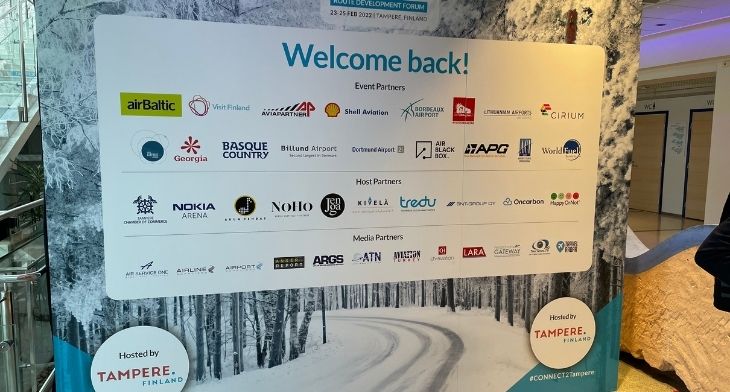


Despite freezing temperatures, some 550 airport and airline representatives from 45 countries have touched down in Tampere, Finland this week for CONNECT’s route development forum.
“It gives me confidence that the industry has weathered the worst of the storm. We are now ready to reunite in person to address the ongoing challenges and emerge stronger than ever,” said conference organiser and CEO of The Airport Agency, Karin Butot, as she delivered a keynote speech to open this year’s event.
Sustainability is a key topic for discussion throughout the conference which runs until Friday 25 February. This was underlined by the presence of climate activists posing as delegates who briefly took to the stage to highlight their environmental concerns.
While speakers universally agreed these were well placed concerns with aviation in the sustainability spotlight, they also highlighted throughout the first day the efforts being made across the industry to reduce carbon emissions.


Providing an overview of the state of the industry in a post-pandemic landscape Strickland said there are signs of hope for aviation. These include strong domestic markets and transatlantic routes being resumed as well as Australia re-opening its international borders.
However, he warned challenges are in the pipeline beyond COVID, such as the state of emergency in Ukraine which has seen the closure of the country ‘s airspace to civil flights amid Russian military action. Strickland noted we are also likely to see a spike in fuel prices as a result of the unfolding situation.
“Manpower is another issue affecting airlines and airports alike,” said Strickland. There is a staff shortage across the industry as many employees were either furloughed, let go, or chose to pursue other careers during the pandemic. “Rebuilding staff resources and getting employees trained up again is proving difficult,” he added.
Another big shift that has arisen as a result of the pandemic is that airlines have had to adapt, explore new markets and test new routes. This has led to a general downsizing in aircraft fleets with growth in demand for single-aisle aircraft. “Airlines will look to be more risk averse with their fleet choices and the Airbus A321 LR and XLR look to be game changers, even more so that the Boeing 737-MAX,” said Strickland.
Low-cost carriers (LCCs) continue to demonstrate their resilience with Ryanair and Wizz Air showing impressive growth. The former expects to have +225 million passengers by FY2026. Having adopted a more cautious approach and shed some of its fleet during the pandemic easyJet’s growth has been slow compared to its two low-cost rivals although it is now building its slot acquisitions at London Gatwick.
Remarking that he was “cautiously optimistic” for the summer season, Strickland concluded “the aviation industry is undergoing major structural change but the winners will be those who seize the right opportunities. Stakeholders need to innovate, adapt and develop ideas with discipline, exploit digital capability whilst maintaining a cost focus and use the flexibility offered by new aircraft types while being mindful of new environmental challenges.”






